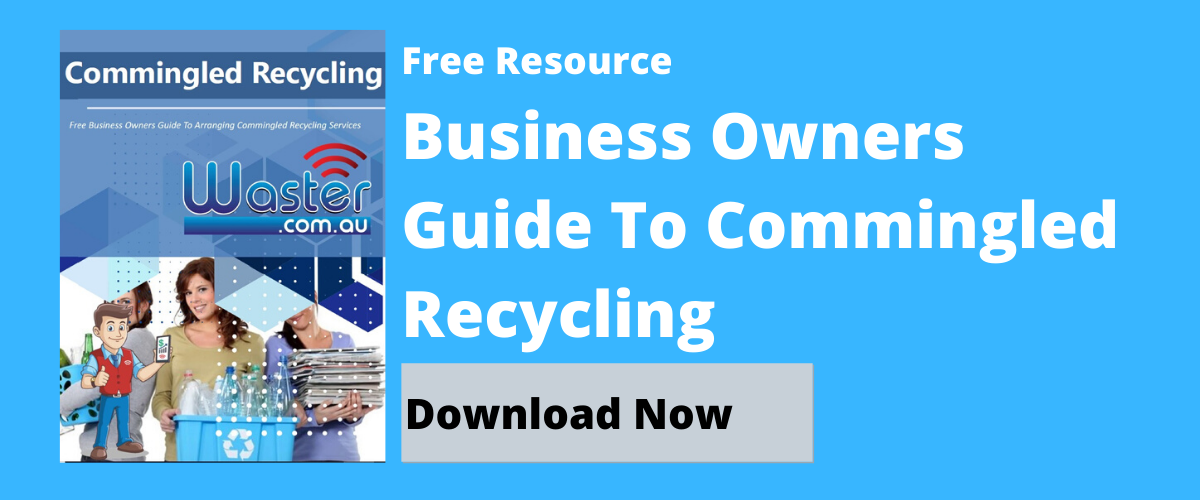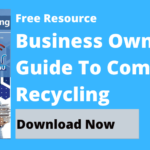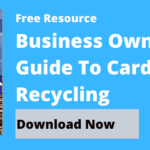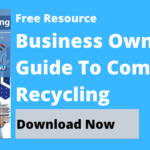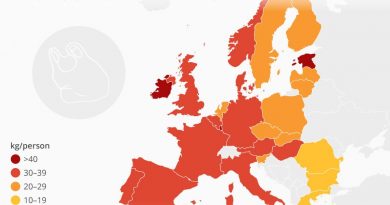Can I Recycle Plastic Packaging? ♻️
Energy Disrupter
Can I Recycle Plastic Packaging? ♻️: Durable, elastic, adaptable and a cheap to produce. These are but some of the characteristics we automatically credit to plastic. And of course, they are pretty much true.
Be that as it may, plastic has – since its inception – become a major scourge of the Earth. Plastic is very easy and convenient to use, but in today’s day and age, more people are raising concerns.
As regards to how much plastic we use as a society and what it does to the environment around us, plastic packaging and other single-use items form a large proportion of the plastics that are leaking out into our oceans. That’s according to the United Nations Environment Program or UN Environment.
>Download Now: Free PDF Business Owners Guide To Commingled Recycling Bin Services
Plastic is not only harmful to the environment but also for our health. The chemicals in the plastic packaging leeches into your food. Hence, absorbing the product equates to absorbing the chemicals as well. It is in our best interest to reduce or avoid (much better option) using plastic packaging.
We can certainly consider that by recycling our plastic packaging. But is it possible to do so? So we ask: can you and I both recycle our plastic packaging waste? Read on to learn more.
A Bit About Waster
Before we discuss how you can recycle your plastic packaging, let me share with you more information about Waster.
We here at Waster provide you with innovative solutions for you and your business’s waste management and recycling needs. Furthermore, we provide flexible, 30-day contracts instead of the typical lock-in contracts, which proves to be better.
Click on the blue button to learn more.
READ: All In One Recycling Bin ♻️
The Need To Recycle Plastic Packaging
Plastic packaging is any product we use to wrap or protect goods, including food, beverages, medications and cosmetic products. Today, more environmentally friendly and biodegradable alternatives to plastic packaging are in use. Needless to say, being environmentally friendly is becoming more and more important.
Eco-friendly products promote green living that helps conserve energy and also prevent air, water and noise pollution. These products are proving to be boon for the environment and also prevent human health from deterioration. Containers and packaging make up a major portion of municipal solid waste (MSW). See our blog on whether lego bricks can be recycled. MSW amounts to 77.9 million tonnes of generation in 2015 (29.7 per cent of total generation).
Both are important in shipping, storage and protection of products. They also provide sales and marketing benefits. The downside: 40 per cent of plastic produced is packaging used just once and then discarded. Moreover, some 18 billion pounds of plastic waste flows into the oceans every year from coastal regions.
That’s the equivalent of five grocery bags of plastic trash sitting on every foot of coastline around the world. Less than a fifth of all plastic is recyclable globally.
Consider Reducing And Reusing Before Recycling
Finding ways to recycle your plastic or paper packaging is good. However, there is a much better alternative to this.
Every bag, (paper, plastic, or reusable) has an environmental impact. There have been debates over the comparative environmental impacts of paper versus plastic bags. Leading to a number of life cycle assessment studies in Europe and North Americ, the findings support the fact that plastic bags have a smaller environmental impact than paper bags.
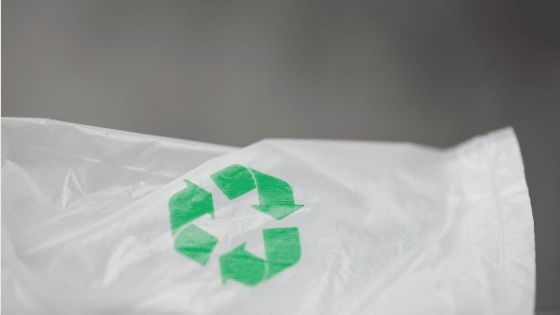

Plastic VS Paper: What’s Best?
The findings also stated that plastic bags are a better environmental solution than paper. Manufacturing of paper bags is much more resource-intensive than plastic consuming larger amounts of energy and water. The manufacturing of paper bags consumes four times more water than the manufacturing of plastic bags.
Furthermore, paper generates three times more greenhouse gases. The key to reducing environmental impact is reuse. This is where plastic outperforms paper. Paper bags tend to fail on reuse because they tear easily and are not waterproof.
Conventional plastic bags are highly reusable and outperform paper. They are reused to carry bags and as kitchen catchers for garbage and organics, among their many uses. Paper also contributes to additional volume and tonnage to the waste stream. You can see a blog here on recycling plastic straws.
Additional volume correlates directly to significant increases in the amount of greenhouse gases emissions produced to transport it.
To illustrate, the typical plastic shopping bag weighs 6-8 grams whilst a standard Kraft paper bag weighs 55 grams. This leads to additional waste, waste management and recycling costs. Granted that both bag types are highly recyclable, paper bags tend to have higher recycling rates than plastic bags.
But despite its low durability, one advantage of paper is that it decomposes much more quickly than plastic. Plastic bags can take between 400 and 1,000 years to decompose. Therefore, it is less likely to be a source of litter and pose a risk to wildlife.
Consider all of these first before accumulating plastic packaging and trying to recycle it.
Take Note
When asked what alternatives are better in comparison to plastic packaging – the most important thing that will make a bag a better option is using it more than once. So if customers have to replace their paper ones more frequently, it will have a greater environmental effect.
The key to reducing the impact of all carrier bags – no matter what the material – is to reuse them as much as possible.
This is according to Margaret Bates, professor of sustainable waste management at Northampton University. Many people forget to bring their reusable bags on their weekly supermarket trip. As a result, consumers end up having to “buy more bags at the till”, she says.
Paper bags require marginally fewer reuses than bags for life to make them more environmentally friendly than single-use plastic bags. On the other hand, paper bags are less durable than other types of bags. This will have a much bigger environmental impact compared with just choosing to use paper, plastic or cotton.
Take-Away And Substitutes For Plastic Packaging
Alternatives to plastic packaging need to be versatile, pliable and if possible cheaper to produce. Not to mention, we need to take into consideration their direct environmental impacts.
Cotton or canvas bags are large and often unfastened bags with parallel handles that emerge from the sides of its pouch.
[embedded content]
Often called “totes” or reusable shopping bags, they are made of sturdy cloth. In addition, they’re washable and compostable! Common fabrics include heavy canvas – possibly dyed – or treated to resist moisture and mould.
Perhaps with thick leather at its handles or bottom. Leather versions often have a pebbled surface. The only difference is that canvas bags are sturdier compared to cotton bags because canvas tote bags are intensely sewn during the manufacturing stage.
Both cotton and canvas – or “calico” – are natural fabrics with high degrees of environmental friendliness. We all know cotton and canvas bags are slowly but steadily replacing plastic bags when it comes to groceries. Moreover, these natural fabrics are biodegradable, and their exploitation and production don’t have a substantial impact on the environment.
Overall, the material of the tote bag should be picked depending on its usage. However, cotton tote bags are more durable, great for screen-printing.
When comparing to the other kind of bags, canvas tote bags are even more durable and last longer. Jute or hessian bags are also other options. They are made from durable and naturally biodegradable vegetable fibres. Jute is also a renewable resource and the plants sequester carbon.
Some Simple Ideas We Want To Suggest In Reducing Plastic Packaging Waste
At Waster, we always argue that people need to take responsibility for the waste they use and produce. No recycling method currently available can rectify all issues.
See our blog on how proper packaging can reduce food waste.
The solution has to be a bit like the old anti-drugs mantra: Just Say No!
Given the global packaging waste statistics, we suggest people need to actually make a conscious stand:
- Shops need to stop serving food in plastic containers. Find alternatives.
- Customers need to shop around for an ethical shop. Or, they could ask for the product to be removed from the plastic or served on a plate. This will make a big impact over time.
- The government needs to put in place some legislation to prevent this crazy over the usage of plastic. After all, with nanny state Australia, they can not claim they do not want to impinge on our freedoms, etc.
We Need To Design Better Plastic Packaging To Easily Recycle It
One of the biggest issues hindering recycling is poorly thought through packaging (so you are left asking yourself what things can be recycled?) that is made from multiple items.
We recently covered how Unilever is moving towards recycling packaging (see what is waste management). We also recently read about an interesting prize in the UK to promote environmental packaging concepts (The Plastics Economy Innovation Prize, promoted by the Ellen MacArthur Foundation).
Quoting from the BBC article on what things can be recycled:
“The Recycling Association named them in a list of products that pose the biggest challenges for reuse. The greater the number of materials used in packaging, the harder it is for recycling machines to separate them.”
“The distinctive Pringles packaging – with its metal base, plastic cap, metal tear-off lid, and foil-lined cardboard sleeve – was said to be a “nightmare”.”
“A $2m (£1.5m) prize for inventors to devise products that are practical and easily recycled will be launched by Prince Charles in London later.”
The determined two worst packaging types:
- “Pringles (and products with similar packaging): “Number One recycling villain. These things are a… nightmare. Impossible to separate the parts.”
- “Lucozade Sport (and drinks with similar packaging): “Number Two villain. This bottle is so confusing to computer scanners that it has to be picked by hand off the recycling conveyor. Then it often just gets chucked away.”
[embedded content]
A simple listing of what things can be recycled includes:
Recyclable
- Paper: cardboard boxes, newspapers, magazines, envelopes, junk mail, food and drink cartons including Tetra Pak
- Plastic: margarine and ice cream tubs, yogurt pots, fruit punnets and ready meal trays
- Bottles: drink, shampoo and detergent bottles
- Tins and cans: both steel and aluminium, as well as aerosols
- Kitchen foil and foil trays
- Glass: all colours but no broken glass or ovenware
Non-Recyclable
- Tissue and kitchen roll
- Plastic wrap, cling film, bubble wrap and plastic bags
- Coffee cups
- Plastic and paper contaminated with food – including grease-stained pizza boxes (some councils may take clean pizza boxes) and paper food plates
- Crisp packets and sweet wrappers
- Polystyrene
- Nappies
- Soft plastic / metallic packaging like pet food pouches
We look forward to learning more about this prize and seeing what solutions it comes up with.
If you are interested in helping the environment, see environmental services careers. See our blog on business recycling Sydney for an update on new cash for recycling proposal.
For more details on what things can be recycled and what can not be – see our recent blogs on topics such as a guide for NSW and polystyrene recycling. Also, see our blog on organic waste processing and if food waste is actually bad for the environment.
Sustainable Packaging Is One Answer
Producing sustainable packaging is as good, if not better than, trying to recycle your plastic packaging.
Whether you buy, say, for example, food from restaurants or food products in the market, it always comes with the packaging. As the demand for these types of products increases, so does the packaging that comes with it.
See our blog on recycling Christmas recycling facts.
You may be asking yourselves, “How can this impact the environment?” With these amounts of packaging that comes along with the products, where do you think does the packaging go?
Paperboard and fiberboard are usually used to create packaging. Chemical residue from these products proves to be very harmful to the environment, as well as the energy and resources used to produce these types of products. See our blog on Australasian recycling labels here.
According to an article, paper bags generate 50 times more water pollutants and 70 per cent more air pollutants in the production process than plastic bags.
As for plastic packaging, though they produce fewer pollutants and consume less energy in production than paper packaging, it takes a long time for them to decompose. Plastic decomposes in about 5-10 years while paper can decompose for a much shorter time, approximately a month.
The buyers also have a responsibility to know what kind of packaging is more environmentally impactful than the other. The issue does not only fall to the businesses for them to solve, but also the consumers. See how edible containers can go further than ice cream cones.
TerraCycle Can Recycle Your Plastic Packaging!
You know by now that trying to recycle plastic packaging is quite a headache, to say the least. But now, it became much easier thanks to TerraCycle.
TerraCycle has a program wherein you can send your plastic packaging for recycling.
View the Plastic Packaging – Zero Waste Box highlighted here.
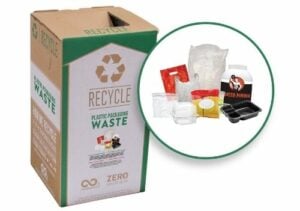

The program involves shipping the waste. Here are the steps:
- Pick the box size you want to purchase – either small or medium for your plastic packaging waste.
- Only put the appropriate type of waste here. In this case, recycle any flexible or rigid packaging. We will discuss more details with you through our statements below.
- After you filled it up with the appropriate items, you can then ship the box to TerraCycle. Use the pre-paid shipping label affixed to the TerraCycle box. Rest assured that your sent items are recycled properly and safely.

Also, for you to ensure the proper recycling of your sent waste, remove all the excess or unnecessary products. Never let the purchased box get wet to prevent damage.
Please do not include any plastic with paper stickers and remove the contents of all food packaging before sending. Also, do not include household hazardous waste such as pressurized canisters, pesticides, oil-based paint or medical sharps, organics, broken glass, bio-medical waste, soiled diapers or expired medication.
Sustainable Packaging: How Can That Help A Business And The Environment?
You might be thinking, “How can sustainable packaging help the Earth?” Well, using them helps the Earth a tonne!
First, let us know what sustainable packaging is. Sustainable packaging is a type of packaging that is either biodegradable, compostable, recyclable or made from recycled products instead.
Now that sustainable packaging comes into play, how can it help businesses and the environment itself?
Millennials today who already gained an influential status for advertisers and also in politics are the front-runners in promoting the saving of the environment. As the dominant users of social media today, they are at the forefront of sustainable packaging pressure groups and advocacy. See our blog on using recycled timber.
Businesses nowadays are encouraged to be more pro-active in helping keep the world environmentally stable. People, especially millennials that will be the future leaders of the Earth, expect businesses to be more careful in producing and packaging the items that they sell.
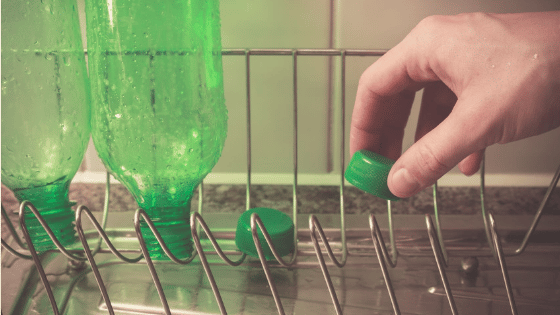

As a business, you should be responsible not to worsen the carbon footprint you produce. You should be aware of the impact of your actions here on our world.
All business topics aside, a big reason why developing sustainable packaging is important is because it is the right thing to do. Sustainable packaging’s number one reason for being created is to help save the planet Earth.
Take note as a buyer, you are also responsible for the cleanliness of the environment. As a buyer, you should be aware of what your packaging is made of and make efforts on how to responsibly package the products you bought.
Tips On Producing Sustainable Packaging
It is not an excuse to use more plastic packaging just because you can recycle it afterwards. Sustainable packaging should still be used.
However, sustainable packaging is a difficult thing to do.
Whatever materials you use for packaging, you cannot avoid energy and resource consumption; you also cannot avoid the waste it produces after use.
Here are 3 tips on how to produce an eco-friendly and sustainable packaging:
- Produce smaller packages – You can save more energy and resources when you produce smaller packages, naturally. Only use produce packaging that is proportional to the item you are packaging – i.e. there is no need to wrap bananas or cucumber in plastic wrap.
- Always use biodegradable materials when possible – People tend to dispose of the packaging that comes along with the item that they bought. As someone who wants to promote environmental cleanliness, you should be aware of your packaging’s components. The faster it decomposes, the better – i.e. with plastic the worst (note – glass often does not break down at all – but is accepted as having less negative qualities).
- Make your packaging reusable – businesses nowadays make reusable packaging for their customers. For example, supermarkets offer eco-bags that people can reuse when they go to the grocery and shop.
Take note that these are just some ways on how to produce sustainable packaging. A little bit of research can really help you go the extra mile; you may even win new customers, as a result!
Can I Recycle Plastic Packaging? – Conclusion
Although recycling flexible plastic is good and all, Waster suggests that you should consider reducing and reusing.
With all the resources available nowadays, it is certainly easier to be sustainable nowadays.
However, there are options you can look at when you want to recycle your plastic packaging waste. You should consider TerraCycle then.
For Your Other Waste Management And Recycling Needs
If you’re looking for recycling bins, check our waste recycling shop and find the best deals in terms of pricing and services.
Also, please call 1300 WASTER (1300 927 837), or email us at [email protected] if you have any further questions.
